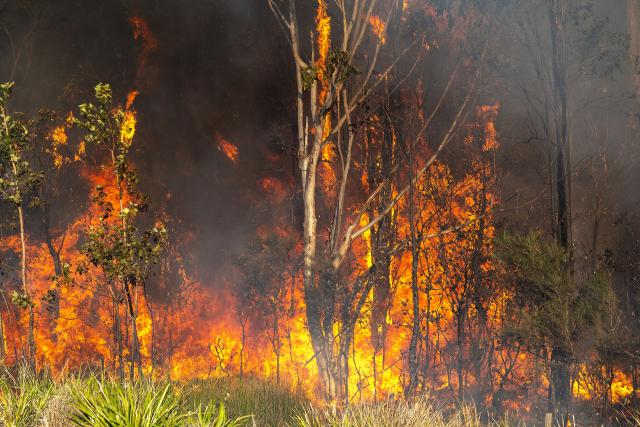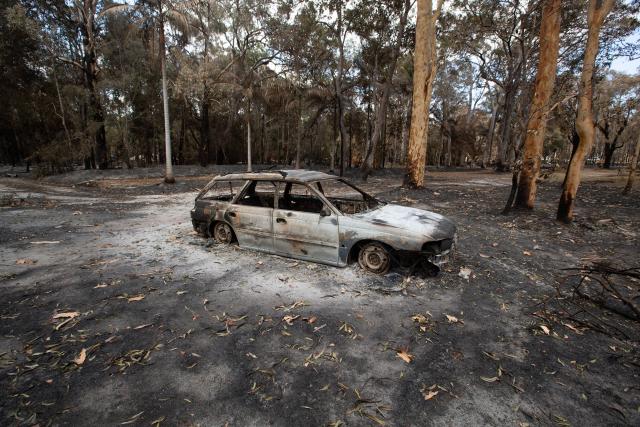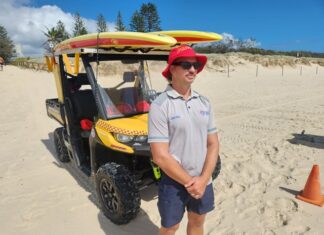Being prepared physically and mentally for future bushfires was the message delivered last week as part of a four-part program to mitigate the impact of future bushfires and build resilience in local residents.
The 2019 Peregian and Cooroibah bushfires were a stark reminder that bushfires are a real threat to the community.
After the bushfires the Productivity Commission reported: “Bushfire prevention is largely overlooked and severely under-resourced”.
Crucially, the commission said, governments “over-invest in post-disaster reconstruction and underinvest in mitigation that would limit the impact of natural disasters in the first place”.
In response to this, funding from the Australian Government’s Black Summer Bushfire Recovery Grants Program has been used to install battery systems at two of Noosa’s evacuation centres to ensure sustained power during times of environmental crisis.
Last Friday, one of the University of Sunshine Coast-led resilience-building workshops as part of a state government-funded program was held at Noosa Parks Association and delivered by representatives from Noosa Council, USC, Queensland Rural Fire service, Ecovantage, Noosa Environment Education Hub and Queensland Health spoke.
“The 2019 fires were significant. Thousands of people were evacuated and forced to use evacuation centres,“ said workshop host and USC researcher in health and sustainability Dr Carina Anderson.
“Our fires were very dangerous.“
Dr Anderson said the bushfire resilience program had four components.
With funding from the Australian Government and advice from Zero Emissions Noosa, money was put toward installing batteries at the venues used during the bushfires as evacuation centres at Noosa Leisure Centre and The J Theatre, so that when power goes out there would be a permanent supply of energy.
The second part of project involves a high school education program operated by Noosa Environmental Education Hub (Noosa EEHub) that teaches kids about the battery system and bushfires.
The third part of the project is series of community workshops, and the final part is a research component.
Energy solutions specialist Shaun Pendall of Ecovantage, the company that installed the evacuation centre batteries, said in the case of a blackout the batteries would kick in without anyone noticing a loss of connection from the grid.
Connected to solar power on the buildings the batteries are not only providing power in time of emergencies but are already saving 120kg of CO2 a day from going into the atmosphere, he said.
Noosa EEHub managing director Dalia Mikhail told workshop participants their curriculum-based bushfire education program had already been rolled out to about 1000 students on the Sunshine Coast.
“We teach students about importance of managing ecosystem through fire,“ she said.
“Students go to site of bushfire, learn about impacts of those fires and learn about traditional fire management.“
Rural Fire Service officer Chris Hall advised people to prepare their properties for the bushfire season by cleaning up around their houses to reduce the fuel available.
“What causes fire is heat, oxygen and fuel. We can’t do a lot about oxygen. We can’t do a lot about fuel unless we plan ahead. Here there’s a lot of stuff lying on the ground,“ he said.
“It means cleaning up around the house – cleaning out the gutters, sweeping up the leaves, making sure there is no rubbish.
“Grass fires burn to about 2-3m in height, heat from grass fires is intense – well over 1000C and it moves very fast.“
Chris said the fires of 2019 had extended up into the tree tops and were well above the normal scale of grass fire that rural units could contain, requiring a combined response from all emergency services.
“The most important thing is to be prepared,“ Noosa Council’s Carbon Reduction Project Officer Annie Nolan said.
“It’s important in order to be prepared, to be informed, be aware.“
Annie urged all residents to register to the Noosa Council disaster dashboard which collates and provides information from all emergency groups during times of disaster, and to sign up for Noosa alerts which sends out SMS information messages an any ongoing disaster.
“It really is a one-stop shop for all of the information you need regardless of whatever disaster there is,“ she said.
“If there is an impending disaster Noosa Council local disaster management group will stand up. They will be the holder of information and response.“
Annie also urged people to be prepared by putting together emergency preparation kits containing important documents such as passports, insurance details and vaccination certificates in a sealed bag ready to grab when needed.
Emma Fraser from Queensland Health talked to workshop participants about the need for psychological preparedness and resilience to prepare ourselves mentally and avoid “disaster brain“.
“We know that disaster planning can help alleviate levels of anxiety and create a sense of control of our own space,“ she said.
“We know carrying out a plan requires us to think clearly so it’s important to plan early. When you’re faced with stress it’s difficult to think clearly.
“From research we know people often underestimate the risk of fires and overestimate how prepared they are and what this preparedness will allow them to do. You need to have solid plans in place.
“Having some psychological plans can help cope in the moment, help carry out your plan, and help assist other family members and reduce stress you may feel post an event.“
Emma described to guests what happens with our disaster brains when people “flip their lids“.
During normal activity the top of our brain, the prefrontal cortex, is responsible for decision making, rational thinking, reasoning and regulating the response to threats to our environment, she said. Underneath is the brain centre connected to emotions.
In everyday life both parts of the brain are connected, she said.
“In times of threat these two parts of the brain lose connection and the lower part of brain, our emotions, can take over – it’s called flipping our lid.“
By following the Red Cross AIM strategy you can control your emotions and prevent your brain flipping its lid, she said.
The strategy involves – Anticipating how you may react to a disaster, Identifying physiological feelings stress may cause such as a racing heart, shortness of breath and feelings of hopelessness, and Managing those reactions through coping strategies such as breathing techniques, recognising negative thoughts and turning them around to create calm.
“We know having coping strategies and awareness can help cope in the moment,“ she said.
Also available to anyone is a free course provided by the University of Tasmania on bush fire training called Your Health which can be found at bushfirehealth.mooc.utas.edu.au
For more on Noosa Council’s Disaster Dashboard, visit disaster.noosa.qld.gov.au








